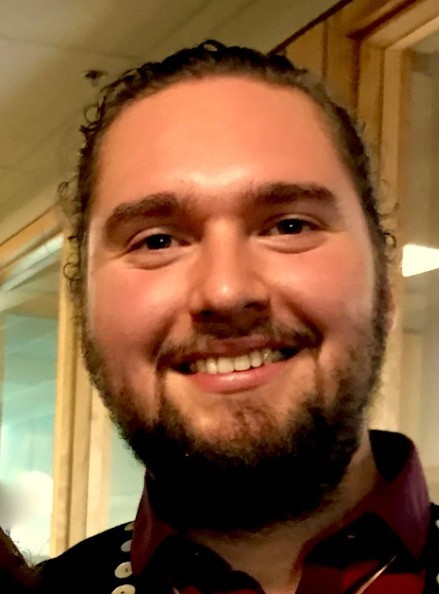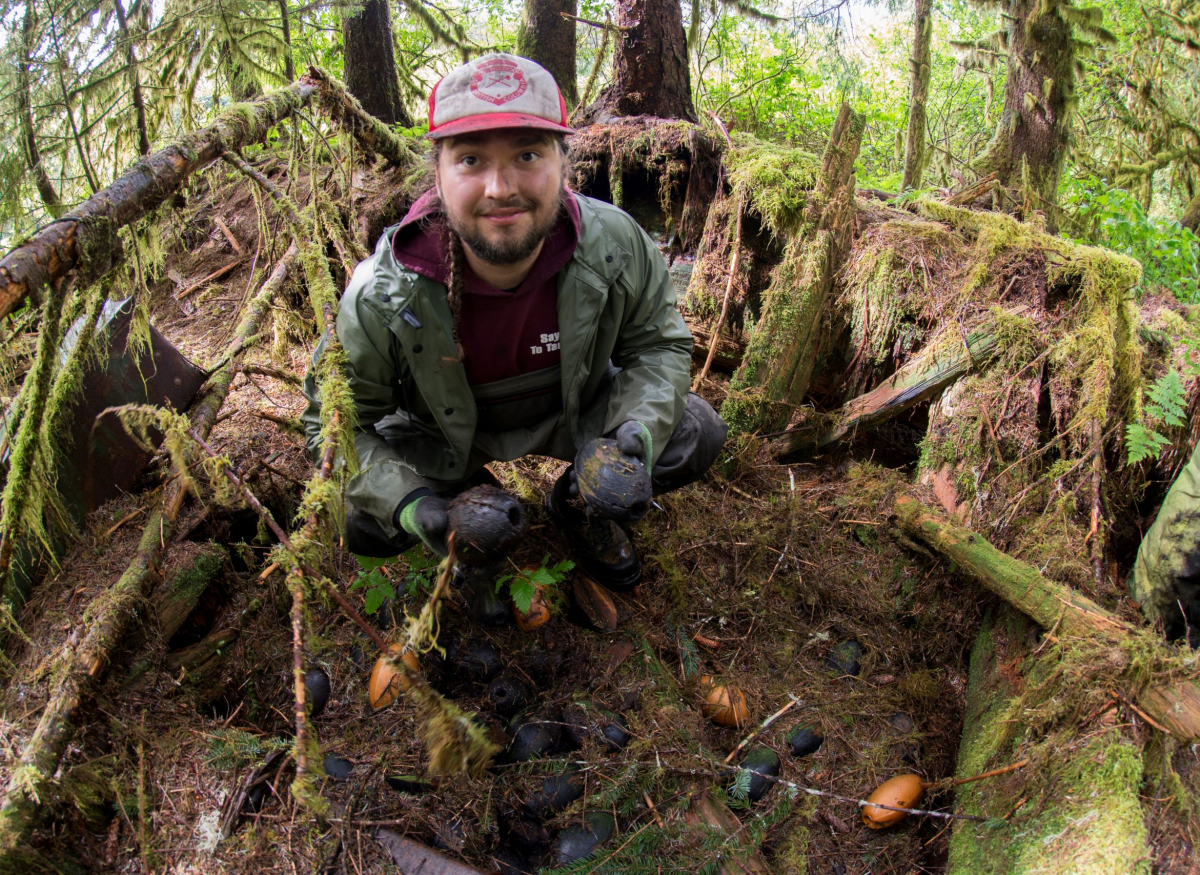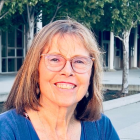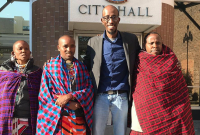Support strong Canadian climate journalism for 2025
As part of a series highlighting the work of young people addressing the climate crisis, writer Patricia Lane interviews La'goot (Spencer Greening), a PhD student in social sciences and humanities at Simon Fraser University.
The 1990s were personally tough for me. Motivated by climate catastrophe science, I spent the decade immersed in various kinds of activism, trying — and by all accounts failing — to stem the tide. Hardest of all, death and dementia came to my family.
As my awareness deepened about the growing divide between young and old and rich and poor, grief had become a pretty constant companion. I could choose to go further into the abyss of fear and loss, or choose the only thing stronger: love. To choose love is to hope. But I had forgotten how. So I made a resolution — one that could last a year or even a decade if need be. I chose to study hope.
Part of my journey is to seek out promising young people who are contending in evidence-based and impactful ways with the climate crisis and engage them in conversations about hope. I am grateful for Canada’s National Observer’s commitment to solutions journalism, which provides these determined, joyful and, yes, hopeful young people a voice.
La’goot’s (Spencer Greening) laughter is infectious. Considering his mission is to protect one of Canada’s most vulnerable communities from a changing climate, one might think he would be a serious young man. But his deep conviction that he is helping humanity learn resilience provides him a joyful foundation.
In his PhD research, 32-year-old La’goot is telling the political and environmental story of one of his Gitga’at people’s cultural keystone places in the heart of the Great Bear Rainforest, where his elders were born and raised.

Explain how your work relates to the climate change conversation.
My people have been here for tens of thousands of years, and like every other Indigenous coastal community in B.C., we have ancient stories about how humans overcame rising sea levels and extreme environmental change by acquiring ecologically based scientific and spiritual knowledge. They tell of mountain refuges and migrations from the B.C. Interior forced by changing geopolitics. They tell us how to survive the hardships that come with disruption. While they do entertain, as lasting stories do, Indigenous knowledge and stories are also an ancient-tested archive teaching us how to be resilient.
What are some lessons that might translate to settler culture?
North American settlers carried an idea of “wild” land where the opportunity for extraction was endless. Industrial society has “managed” the land so that in only 100 years it gives much less. But over many millennia, our people learned ways of extracting that increase yield, biodiversity and resilience. Learning to manage ecosystems to give more life requires give as well as take.
Consider our clam gardens. Human-made rock walls work with tides to sift sands and flatten the area so instead of a beach, it becomes a steppe. Clam production increases dramatically while putting more nutrients into the beaches and surrounding forests. This feeds the entire ecosystem, including birds, wolves and bears, which in turn each help maintain its health.
When we fish for salmon, we use fish traps or weirs, which allow selective harvesting based on the health of the salmon run. We can also encourage super spawners, helping the strongest salmon genes to reproduce. At the time of contact we harvested at least the same amount of salmon as industry does today. But our harvest allowed for growth. The latter has been a catalyst for a crashing species.
Indigenous people protect much of the world’s biodiversity. How does that happen?
Just as in a long and successful marriage, we have fine-tuned our relationship with our lands, water, air and the non-human beings that share our ecosystems with us, and learned the ebbs and flows. It is an even stronger connection than a marriage because the relationship feeds us, gives us language, culture and spirit.
Over millennia, we have developed confidence that we will overcome challenges with each other. Yes, you face fear and worry in times of a changing climate, but you have faith that you can overcome together.
We also know in advance what would be bad for this metaphorical marriage. Open-pit bitumen mining or clear-cut old-growth logging are not possible when you feel forever connected to that ecosystem.
How exactly is your community threatened?
Rising sea levels and changing water and air temperatures are major threats. Tankers, pipelines, clear-cutting and mining both advance climate change and accelerate the degradation of the natural world, which is the foundation of our food, shelter, culture, language, spirit. What do we have left when that is lost?
But our ancestral teachings guide us. I was really anxious when COVID-19 first arrived. But when I called home, I got a beautiful answer: “Things are good; the men have all gone out harvesting for the community.”
Everyone understood that crisis requires ensuring community needs are met, and special attention is paid to caring for the elderly. A much different response than individuals competing for toilet paper.

What advice would you give young people?
Lean into the land for knowledge and wisdom. I am grateful to be so connected to a healthy ecosystem. But you don't have to have my heritage to take advantage of this ancient idea. Build a connection to some part of the natural world, understand how it can provide for you and how you can give back. Consciously build a community. Relationships will see you through.
What does support look like from older generations?
My grandfather was torn from his home and sent to residential school. He teaches me resilience by telling me how he survived as a fully dimensional human. If you have lived a full life, you have most likely experienced hardship and change. Tell your stories so we can all benefit.
It is one of the reasons I am joyful. When I think about climate change, I feel fear. But then I think about my elders and the generational knowledge they carry of resilience in the face of incredible adversity, injustice and climate change, I feel hope.







Comments
"My people have been here for tens of thousands of years, and like every other Indigenous coastal community in B.C., we have ancient stories about how humans overcame rising sea levels and extreme environmental change by acquiring ecologically based scientific and spiritual knowledge. "
Is this metaphor? Or are we expected to accept this as fact? Science was not formalized until late in the 17th century and likely didn't reach BC before the 18th, never mind the Great Bear Rain Forest. According to archaeologists, BC was colonized by waves of immigrants, starting about 15,000 years ago, as the last glaciation receded. And many coastal cultures around the world have 'flood' stories in their cultural history. The population met by European colonizers was just the previous wave of colonizers, one in a still continuing series of waves as people move away from adversity.
As for spiritual knowledge, the world is unfortunately overcrowded with competing spiritual beliefs, explanations based on assertions, not science, and none more provable than the others. Unfortunately, "its turtles all the way down". We are not going to solve our current problems by lionizing the beliefs of particular [genetic or geographic] groups of people. Respect the individuals - YES; question their beliefs and assertions and test them - of course - that's the basic premise of science, and it works both ways.